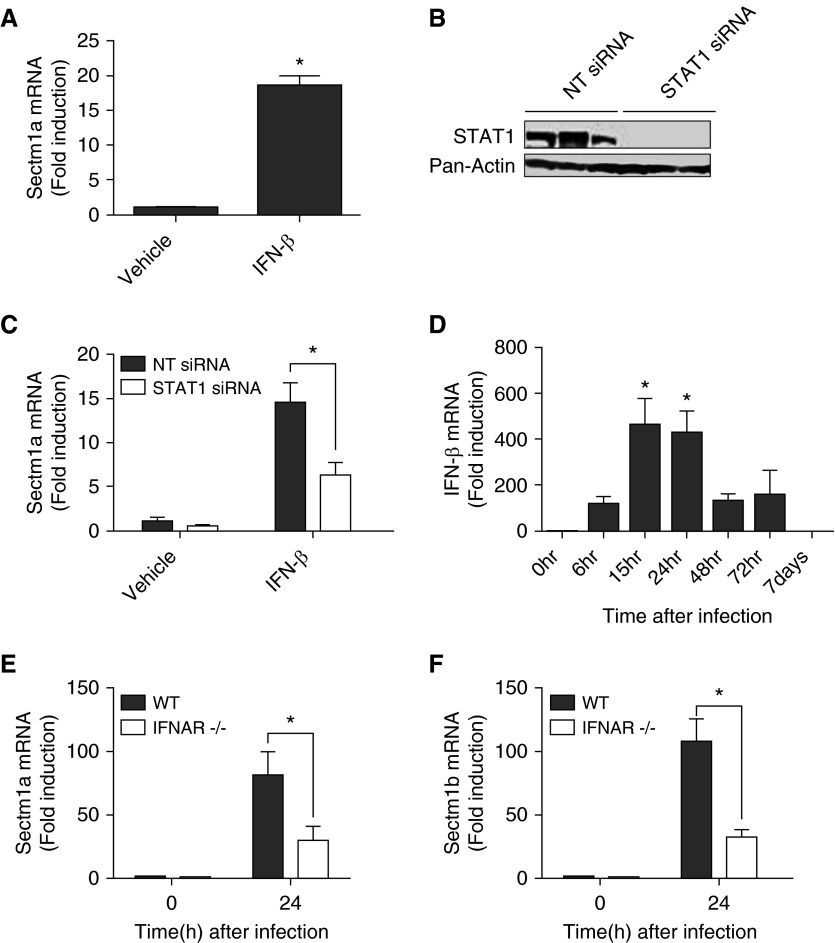Figure 3.
Type I IFN signaling mediates Sectm1 induction through signal transducer and activator of transcription (STAT) 1. (A) Alveolar epithelial cell–like E10 cells were stimulated with IFN-β (1,000 U/ml) for 6 hours. Expression of Sectm1a was measured using qRT-PCR. Values represent fold induction relative to vehicle group and were expressed as means (±SEM). Significance was determined by Student’s t test. Results reflect data from three independent experiments. *P < 0.05 versus vehicle. (B) Immunoblot analysis of E10 cells 48 hours after transfection with either nontargeting (NT) or STAT1 small interfering RNA (siRNA). (C) qRT-PCR of Sectm1a expression in siRNA transfected cells treated with vehicle or IFN-β (1,000 U/ml) for 6 hours. Values represent fold induction compared with nontargeting and vehicle-treated group and were expressed as means (±SEM). Significance was determined by two-way ANOVA with Sidak’s post hoc test. Results reflect data from three independent experiments. *P < 0.05 versus nontargeting siRNA. (D) C57BL/6 mice were infected with S. pneumoniae serotype 19F. Expressions of IFN-β were measured in left-lung homogenates using qRT-PCR at indicated time points. Values represent fold induction relative to 0 hours and are expressed as means (±SEM). Significance was determined by one-way ANOVA with Sidak’s post hoc test (n = 4–8 per group). *P < 0.05 versus 0 hour. (E and F) WT and IFN-α/β receptor (IFNAR)-deficient mice were infected with S. pneumoniae serotype 19F and killed 24 hours after infection. mRNAs were measured in lung homogenates using qRT-PCR. Values represent fold induction relative to 0 hour, WT, and are expressed as means (±SEM). Significance was determined by two-way ANOVA with Sidak’s post hoc test (n = 4–5 in each experimental group). *P < 0.05 versus WT.

